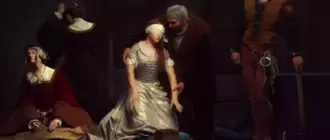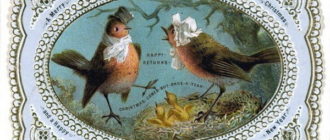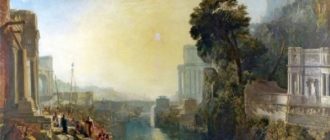
Painting “Proserpine” by Dante Gabriel Rossetti – an ancient Roman legend through the eyes of a Pre-Raphaelite artist
“Proserpine” is a painting by Dante Gabriel Rossetti in 1878 based on the myth of a goddess who was kidnapped by a loving god of the underworld and tricked into spending part of the year in his kingdom.
The main character of the work is a beautiful dark-haired woman in loose clothes. In her hands she holds a bitten pomegranate – the same fatal fruit that caused her imprisonment. A smoker is standing next to it, and ivy curls in the background, which the artist called “a symbol of unrelenting memory.” On Proserpine’s face, melancholy and sad pensiveness.
The goddess looks detached, lost in thought about her carefree past. Rossetti very vividly conveyed her inner tension: a somewhat awkward tilt of the head, a strange position of the hands: one seems to be reaching out to bring the grenade to her mouth, while the other is holding it. The gloomy atmosphere of the underworld is emphasized by dark muted tones. The spot of light behind Proserpine’s back, designed to remind of the world of the living, only aggravates the feeling of oppressive sadness.
Title of the painting: “Proserpine” (English Proserpine).
Author: Dante Gabriel Rossetti (1828-1882).
Year of writing: 1878
Size: 120 x 56 cm.
Style: Romanticism.
Genre: Mythological.
Technique: Pastel.
Material: Paper.
Location: Private collection.

Dante Gabriel Rossetti is a 19th century British painter and poet, the founder of the Pre-Raphaelite movement.
In the late period of his work, the wife of his friend Jane Morris became the muse and the main model of the author’s paintings. It was her that the artist portrayed in the image of Proserpine, hinting at the similarity of the fate of Jane, married to an unloved man, and the ancient Roman goddess imprisoned in the kingdom of the dead. The same is said in the sonnet, which the master placed in the upper corner of the masterpiece.
This painting, like other female portraits by Rossetti, is permeated with aestheticism and romanticism. Everything in the guise of Proserpina emphasizes her exquisite beauty: delicate facial features, deep soulful eyes, clothes that fall in graceful folds.
The red lips of the heroine are discordant with the general dark color palette, the deep sensual color of which coincides with the shade of the flesh of a bitten pomegranate – an allegory of forbidden passion that led the goddess to a sad ending. The mythological plot did not let the artist go for more than a decade. The most famous work of 1974, which became an exhibit at the Tate Gallery.
The 1878 painting was acquired by a fan of his work from Scotland. Then the masterpiece changed its owner, and in 2013 it was sold at Sotheby’s auction in London for a record amount for the author of $ 5.3 million. The painting “Proserpine” by Dante Gabriel Rossetti is a work in which the tragic story of a goddess who knows a forbidden passion and the contradictory emotions of the author in love with his model are intertwined in a bizarre way.






